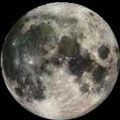Rocket crashes into moon in search for water
 Washington - A NASA rocket crashed into the moon Friday, sending a huge plume of dust 10 kilometres above the surface in an experiment scientists hope will provide data about ice hidden in the perpetually dark lunar craters.
Washington - A NASA rocket crashed into the moon Friday, sending a huge plume of dust 10 kilometres above the surface in an experiment scientists hope will provide data about ice hidden in the perpetually dark lunar craters.
Major telescopes around the world were aimed at the Cabeus crater on the moon's south pole for the 1131 GMT impact of the Lunar Crater Observation and Sensing Satellite (LCROSS).
Despite the spectacular nature of the experiment, there was little for space buffs to see in the first pictures. Images broadcast on NASA television went white in a flash of dust as the first of a two- stage craft slammed into the surface and then abruptly ended as the second stage, carrying a camera and other instruments, also crashed.
NASA scientists said that it is possible for frozen water to have remained in the moon's craters for billions of years, because the bottoms of the craters are never reached by sunlight and protect any ice from evaporation into the thin lunar atmosphere.
The LCROSS mission and its companion Lunar Reconnaissance Orbiter satellite are designed to prepare for a return by humans to the moon, determining where conditions might be most conducive to establish long-term bases.
Astronomers in NASA's mission control said the craft's instruments had been working properly, but that it would take weeks to analyze the data to say for certain whether water was present.
"The LCROSS science instruments worked exceedingly well and returned a wealth of data that will greatly improve our understanding of our closest celestial neighbor," said Anthony Colaprete, LCROSS principal investigator. "The team is excited to dive into data."
The craft separated in two above the moon, allowing scientific instruments to observe as the rocket component deliberately crashed into the moon at 9,000 kilometres per hour, kicking up a plume of dust that scientists hope to analyze for traces of water that they believe are abundant in the cold, shadowy craters. The second half of the craft then crashed into the moon minutes later. Its impact was monitored by an accompanying orbiting satellite and a bevy of telescopes.
The impact was designed to mimic that of the large, natural asteroids that slam into the moon several times a month.
The NASA probe targeted a 100-kilometre wide, 4-kilometre deep crater and was timed to strike when lighting conditions are ideal for observing the impact. The
585-kilogramme craft created an impact crater about 2 metres deep.
Despite the concerns of some naysayers in the blogosphere, the moon was not be harmed by the event.
"The impact has about a million times less impact on the moon than a passenger's eyelash falling to the floor of a 747 during flight," Daniel Andrews, LCROSS project manager, said Thursday.
The total impact lasted just minutes, but scientists say the experiment will produce valuable information to be collected on nine instruments, including five cameras that capture images in colour, thermal and near-infrared images.
Simultaneously, images of the impact were captured by the companion Lunar Reconnaissance Orbiter, a satellite now circling the moon, as well as the Hubble Space Telescope and terrestrial telescopes. The composition of the material kicked up by the impact will help scientists deduce whether water is present.
Data from three missions late last month revealed that there are small, but widespread amounts of water across the entire surface of the moon. That announcement is seen as complementing, not preempting, the LCROSS mission.
Astronomers said before the impact that new data from 79-million- dollar LCROSS mission will complement the earlier findings because water is believed to be much more abundant in the craters. The findings could aid future manned missions to the moon, which could establish long-term outposts. dpa